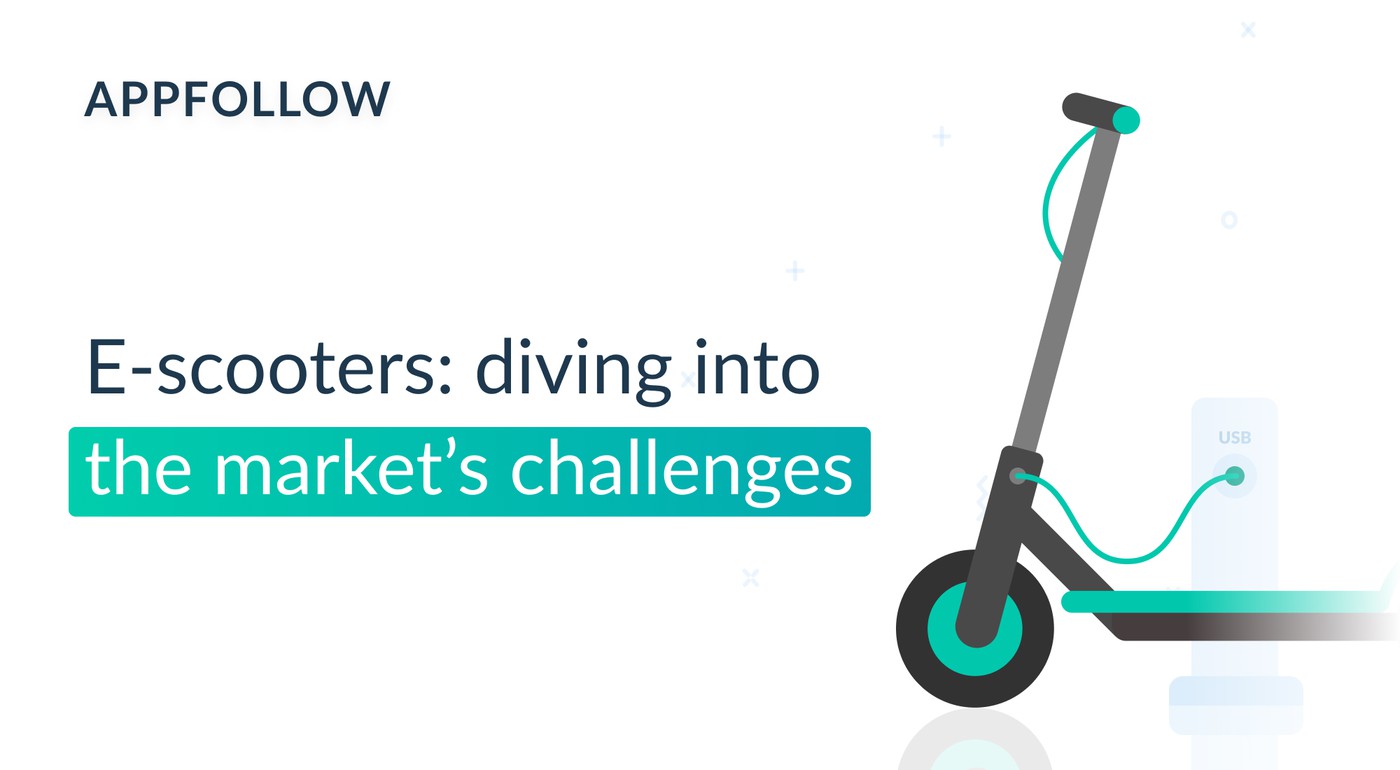E-scooters: diving into the market’s challenges and perspectives

Table of Content:
Ever since 2017, the micromobility has been a trend on a fantastic rise, but not without its own line of problems. The market is fluid with the competition, both international and local. Things appear to be so lucrative, even Apple and Google are expected to enter the space. Despite its novelty (or thanks to it), the e-scooter market is expected to reach 40 to 50 billion US dollars in 2025
Every micromobility company relies on its app to deliver the service, however. Without a secure payment system and quick access to available scooters, the whole appeal of renting an e-scooter fades.
Is there an app amongst any player on the market that stands out? Why? How are they faring? What do the users and app stores say? Let’s learn about that — and the market’s current health — below.
What’s on the market
A few words on the current situation:
The US is the biggest market so far with a bigger number of players. Scoot, Spin, Jump, Bird, and Lime were among the first. Then in 2018 Uber acquired Jump and partnered with Lime, and a year later Bird acquired Scoot. Everything points to e-scooters’ continued market growth in the US.
The European market has a shorter history. A Bosch-owned service Coup was among the first there, but at the end of November 2019, the company announced shutting down operations in all of its locations. Local services like Tier, Voi, Cirk, Flash, and Arolla are actively growing across the EU, while the US-based Lime, Jump, and Bird increase the competition by entering the market.
Jump was expected to hit in Latin America, but eventually Uber decided to deliver e-scooters under its own brand there. Another service in LatAm, Grin, is announced to merge with a Brazil-based Ride.
Now it’s time for global invasions: services enter new countries, deal with local legal systems, and try to win new users.
Legalization issues
E-Scooters regulation is the only way to turn a chaotic mess of scooters into a novel form of transportation.
While the city of Austin ran a pilot program designed to help keep Austin moving safely, San Francisco completely banned electric scooters until the companies obtained city permits. As a result, four companies got permission: Jump, Lime, Scoot and Spin (that’s when Bird didn’t get a permit and acquired Scoot).
Germany was the latest nation to approve the use of e-scooters on roads and bicycle lanes.
When the law finally came into effect, two Europan-based e-scooter services, Voi and Tier, blew top charts of App Store and Google Play in Germany:


There are still countries that haven’t been able to regulate the use of e-scooters. Mostly it turns into user complaints.
To get a picture of how the international competition is trying to penetrate the market, simply check the keywords that leaders use in their App Store Optimization (ASO) strategy.
Here are, for example, the keywords from top-1 where Circ mentions cities they’re targeting:

And this tactic is working, especially for tourists looking to sign up for a local service before going there. As one of their customers says: “circ came up on the App Store first under a search for scooters in Berlin.”
Here are the most mentioned cities in search requests the leading rank for:

However, if launching in a new location was that simple, we would all be drowning in e-scooters. So what else is there?
How do micromobility companies work with their app users
Spoiler: most of them don’t.
Most leaders don’t pay attention to the issues their users experience. That is surprising, given how important feedback and customer support is to a demand-based service with an expensive inventory.
Customers file complaints on a variety of issues, and every single one of them makes a difference for the person that didn’t subscribe to the service yet. For instance, in Germany, Circ appears to be the only company that takes its online reputation management very seriously and makes a big effort towards customer support. Could it be a coincidence that Circ leads the market with almost twice the headway as opposed to the closest runner?
Sometimes things go awry and the company’s app store reviews end up with a wound like this one:

At the very least, this particular review got an answer. Most of the feedback is left unanswered, which makes those services look like crooks:

A new user paying attention to reviews would be wary of using a service that lets this kind of situation unfold and does nothing.
What are the most popular user complaints?
- Slow scooters
- Broken scooters
- Battery issues
- Weak internet or GPS signal: leads to the inability to find a scooter
- App’s bugs and crushes: lead to the inability to unlock a bike or end a ride
- Being overcharged: mostly because of app crushes or vague pricing policy
- No restricted zones identification: leads to penalty charges
- No parking zones indicators: leads to pricing complaints as well
- Inability to sign up in another country: leads to losing tourists in the area
- Bad customer service and their inability to help faster
What an opportunity for a brand new e-scooter service to take on, hah! And some services did their homework and came up with solutions to some of the problems.
The first one is a California-based startup Swiftmile that operates using solar or plug-in power, promising to deal with battery issues. Moreover, the company bills itself as “a gas station in the middle of where all the scooters are”. So far Swiftmile announced to create branded charging hubs for Spin e-scooters.
A Dublin-based service Luna states to resolve issues with pedestrian safety and scooter parking. And another service Tortoise is inspired by the idea of autonomous parking in the U.S. They promise to spread e-scooters out to areas that need them most.
Although these services didn’t make it big yet, one should never underestimate the importance of user feedback in a race to the highest revenue.
App rating and reputation of e-scooter apps
Obviously, there are other consequences for services and apps that don’t take care of their users: drop of rating and as a result lower visibility and a drop in downloads.

Takeaways
While it’s no surprise that customer-obsessed companies conquer and win the market, most of the e-scooter apps don’t talk to their users. Certainly, companies that show their support to users and answer to reviews are getting headway and increase in downloads (and thus, revenue). It’s definitely something to keep in mind.
Unless new regulations wreak havoc to e-mobility as a whole, the reformation of urban mobility has just begun. No matter how you look at the micromobility market, everything points out to its continued growth. While it is seasonal for a good chunk of the world, it also leaves the competitors to prepare for competition at the beginning of spring.
Disclaimer: this story was originally posted in MoEngage blog.








